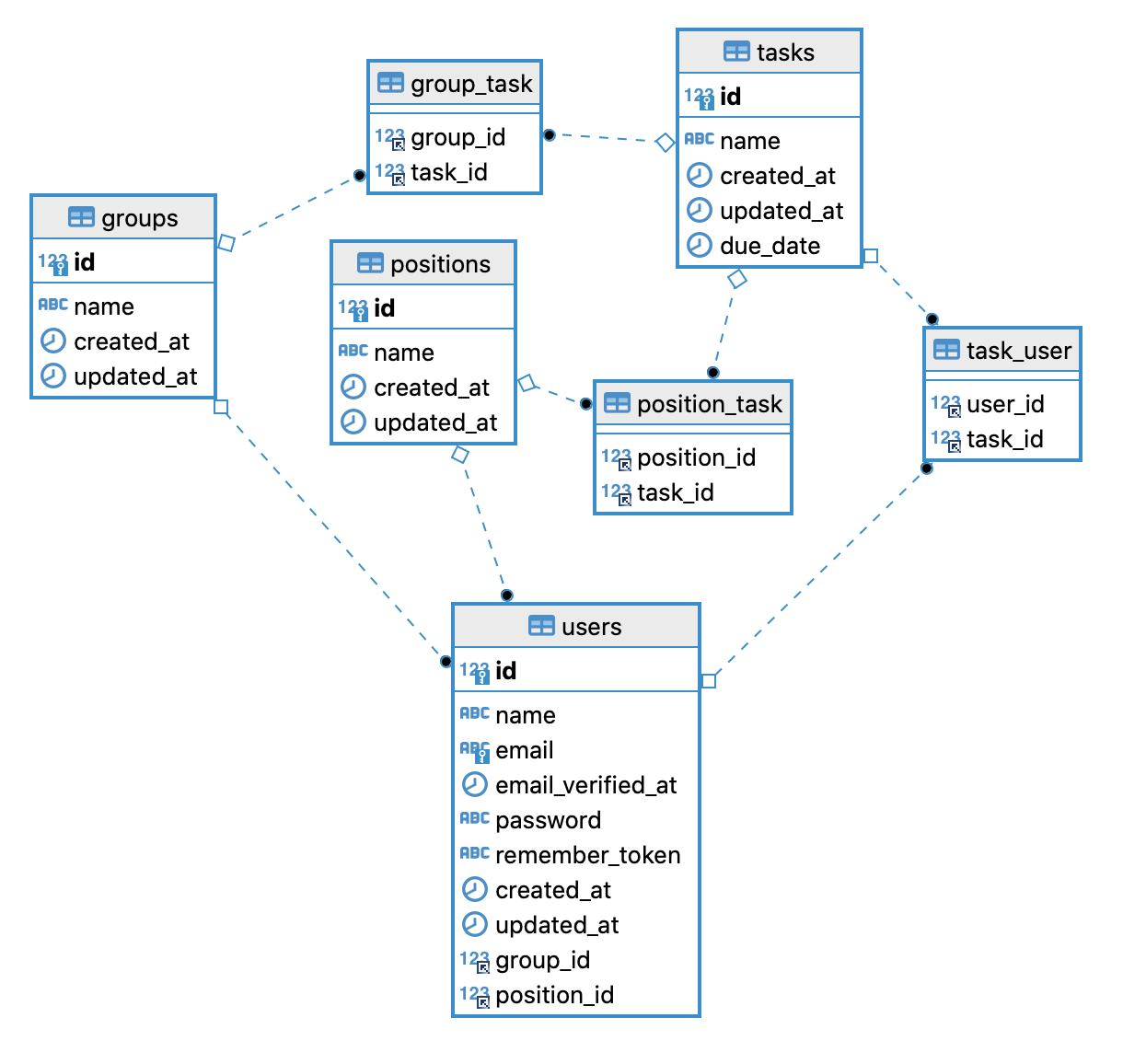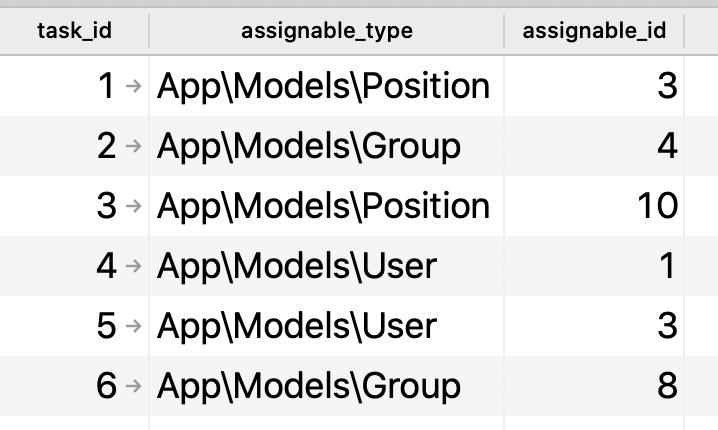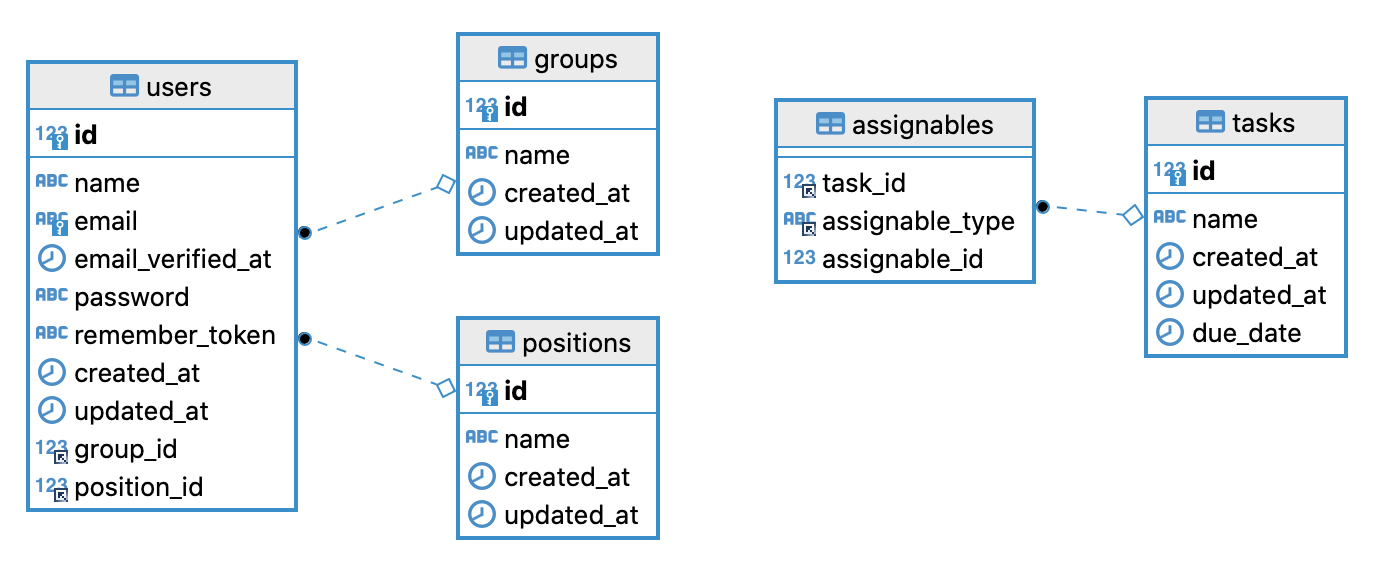When structuring a database, similar relationships may repeat, like a Task may be assigned to a User, User Group, or User Role. Is it worth thinking about polymorphic? In this example, let's compare the performance and convenience to use.
Problem Explained and Two Options Shown
It's easier to understand the problem visually, so here's the form we're dealing with:

So, how to save the data here? Two main options.
Option 1. Multiple Many-to-Many Pivot Tables**
So, we can create three DB intermediate tables:
- group_task: group_id, task_id
- position_task: position_id, task_id
- task_user: task_id, user_id
Here's the code for the Migration files:
Schema::create('group_task', function (Blueprint $table) { $table->foreignId('group_id')->constrained(); $table->foreignId('task_id')->constrained();});Schema::create('position_task', function (Blueprint $table) { $table->foreignId('position_id')->constrained(); $table->foreignId('task_id')->constrained();});Schema::create('task_user', function (Blueprint $table) { $table->foreignId('user_id')->constrained(); $table->foreignId('task_id')->constrained();});And here's the Eloquent model:
app/Models/Task.php:
use Illuminate\Database\Eloquent\Relations\BelongsToMany; class Task extends Model{ public function users(): BelongsToMany { return $this->belongsToMany(User::class); } public function groups(): BelongsToMany { return $this->belongsToMany(Group::class); } public function positions(): BelongsToMany { return $this->belongsToMany(Position::class); }}Visually, it would look like this:

Option 2. Polymorphic in One Table
Alternatively, we may create this table with many-to-many polymorphic:
assignables: task_id, assignable_type, assignable_id
Here's the Migration code:
Schema::create('assignables', function (Blueprint $table) { $table->foreignId('task_id')->constrained(); $table->morphs('assignable');});And here's the Model:
app/Models/Task.php:
use Illuminate\Database\Eloquent\Relations\MorphToMany; class Task extends Model{ public function users(): MorphToMany { return $this->morphedByMany(User::class, 'assignable'); } public function groups(): MorphToMany { return $this->morphedByMany(Group::class, 'assignable'); } public function positions(): MorphToMany { return $this->morphedByMany(Position::class, 'assignable'); }}These would be the values in the DB:

Visually, the DB schema would look like this:

Correct, polymorphic relations are not actual DB relationships. They assign values only on the Laravel application level but not in the DB. So there are no direct foreign keys, and you can't (easily) use automatic operations like "delete on cascade".
That's actually the first drawback of polymorphic, in general. Someone could delete the Task record assigned to someone, and no related records in assignables would be auto-deleted or even flagged. In case of many-to-many, DB would fire the error about the constraint and prevent the Task from being deleted.
Code for Storing Data is Identical
Now, let's look at the code for submitting the form and...

;-(8)-front_grid.jpg)
;-(5)-front_grid.jpg)
;-(2)-front_grid.jpg)
-front_grid.jpg)
-front_grid.jpg)